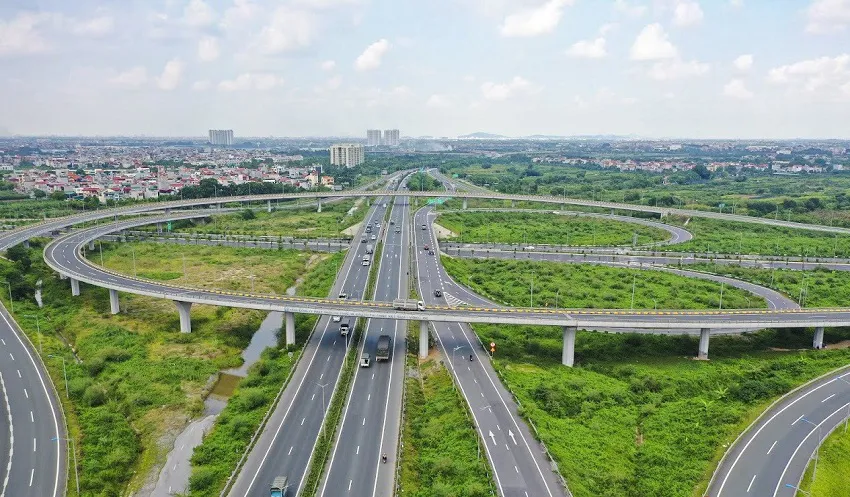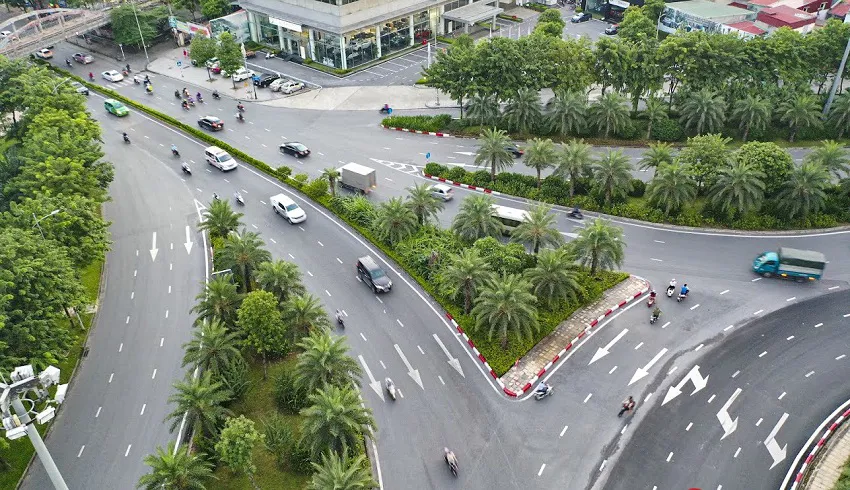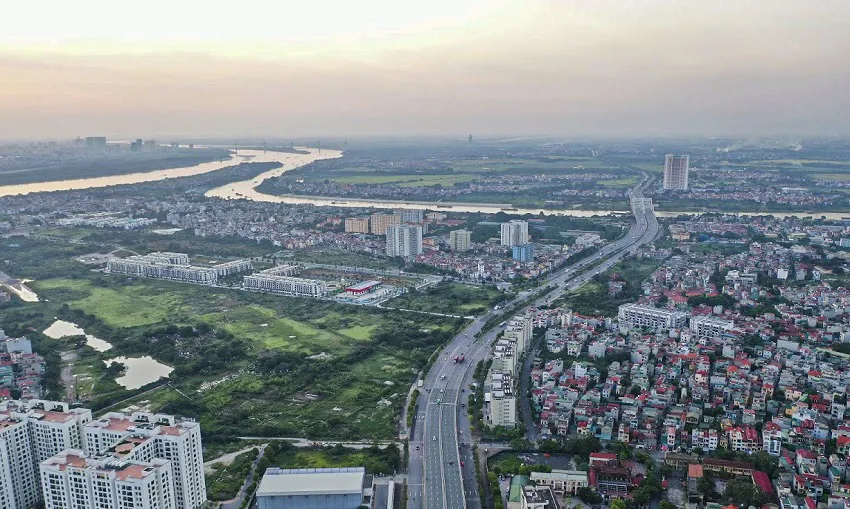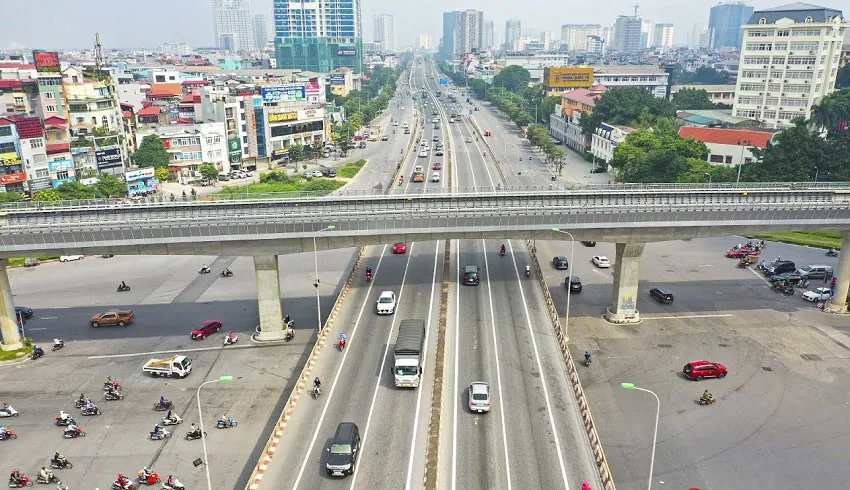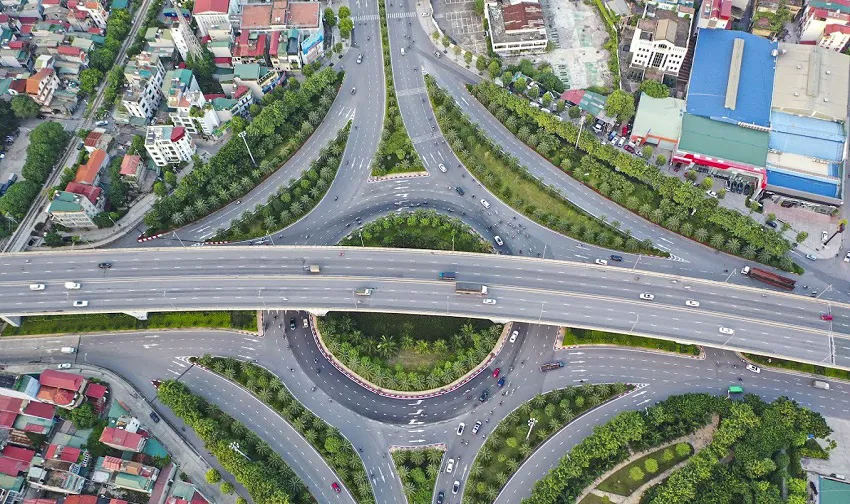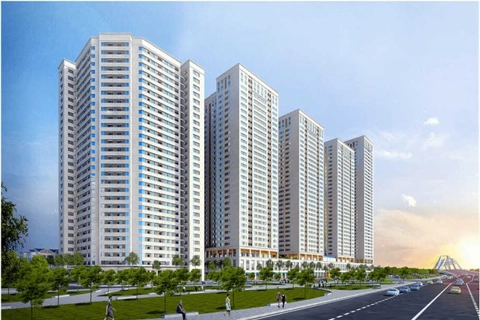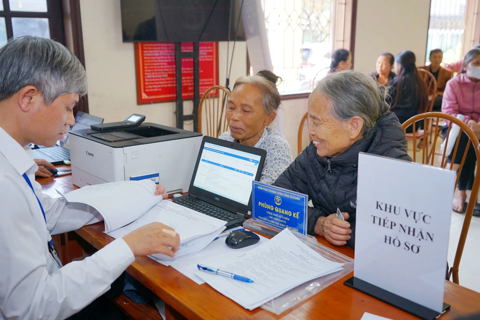Hanoi cityscape transformed with transport network
Hanoi deserves to be a leading locality in the country as it has transformed its road network.
Fifteen years after the administrative boundaries of the capital were expanded, the city's road infrastructure is undergoing significant changes.
A myriad of new roads and bridges
| The intersection of Ringway 3 and Hanoi- Hai Phong Highway was opened to traffic on January 9, 2021, with an investment of VND 402 billion (US$17 million). Photo: Infonet |
Back in 2008, the 12th National Assembly issued Resolution No. 15 on the adjustment of the administrative boundaries of Hanoi and related provinces. Four years later, the general strategy and planning for Hanoi's socio-economic development up to 2030, with a vision for 2050, came into effect. As a result, the capital got a new facelift, with ring roads, bridges, and radial roads gradually forming a synchronized system.
Shortly after the merging of neighboring localities into Hanoi, a number of major transportation projects were launched to connect the city center with the periphery, including Thang Long Boulevard, Nhat Tan Bridge, Vo Nguyen Giap Street, and the Cat Linh-Ha Dong metro line.
At the same time, many important structures have been put into operation: Ring Road 2, Vinh Tuy Bridge, Ring Road 3, Southern Ha Tay Arterial Road, National Road 1A (Van Dien-Ngoc Hoi section), sections of Ring Road 2.5 and Ring Road 3.5, overpasses at intersections such as Nguyen Van Huyen-Hoang Quoc Viet or An Duong-Thanh Nien, slip road from Ring Road 3 to Hanoi-Hai Phong Expressway, or routes through Tan Linh Ward (Ba Vi District).
After years of efforts, Hanoi now has seven radial highways with a total length of 111 km and eight radial national roads with a total length of 244 km. Some 132 out of 285 km of the seven beltways have been completed, while four radial routes (West Lake-Ba Vi, West Thang Long, Ngoc Hoi-Phu Xuyen, Ha Dong-Xuan Mai) connecting the metropolitan area with satellite cities are also being urgently invested in.
| The Long Bien intersection in Long Bien District, Hanoi. Photo: Infonet |
Half of the planned 18 bridges over the Red River have been built, namely Chuong Duong, Long Bien, Nhat Tan, Thang Long, Thanh Tri, Trung Ha, Van Lang, Vinh Thinh and Vinh Tuy. For six others, including Hong Ha, Me So, Thuong Cat, Tran Hung Dao, Tu Lien and Van Phuc, construction preparations are being completed.
Hanoi, together with related provinces, launched the Ring 4 - Hanoi Capital Region project in June. This is the first regional road project to implement Politburo Resolution No. 15-NQ/TW on tasks and directions for Hanoi's development and Resolution No. 30-NQ/TW on socio-economic development and ensuring national defense and security in the Red River Delta by 2030, with a vision of 2045.
The project is the basis for urban planning and infrastructure development, providing new impetus for the development of the metropolitan area and satellite cities (Soc Son, Son Tay, Hoa Lac, Xuan Mai, Phu Xuyen), as well as an artery to promote their industrial, regional and multidimensional linkages. At the same time, it will help to divert traffic, thereby reducing the pressure on the current transportation system.
Promoting regional connectivity
| Bird's eye view of the Long Bien district. Photo: Infonet |
In terms of mass transit, Hanoi's bus network continued to expand and rationalize after the city's expansion. More new bus lines were set up to connect the newly incorporated suburban districts. These additions mean that all 30 districts and the capital city are now accessible by bus, with subsidized fares.
The network consists of 154 routes, of which 132 are subsidized, eight are non-subsidized, 12 are interprovincial, and two are for city tours. Regarding facilities, there are 351 covered bus stops, 4,405 stops, five interchanges and 127 terminals.
Buses also connect the city with seven neighboring provinces: Bac Giang, Bac Ninh, Hai Duong, Ha Nam, Hoa Binh, Hung Yen and Vinh Phuc. Most importantly, Hanoi's mass transit has become a multimodal network, making it more convenient for passengers to access and use the service.
Transport development to be prioritized in resource allocation
| The Mai Dich viaduct in Cau Giay district. Photo: Infonet |
According to architect Dr. Dao Ngoc Nghiem, vice chairman of the Vietnam Urban Development Planning Association, 15 years after its enlargement, the capital's infrastructure in general and road infrastructure, in particular, have undergone significant changes.
The number of roads, flyovers, modern public transport, and bridges over the Red River has increased, while many streets and alleys have been renovated and embellished.
"Although the city has many policies and mechanisms to develop road transport, it has still been unable to meet people's travel needs," he said.
"Therefore, the city should pay more attention to high-capacity mass transit, allocate a larger budget and mobilize resources to improve the transport system," he stressed.
To develop a modern, synchronized transport system, Hanoi will focus on completing relevant national roads, expressways, ring roads, and intra-regional and inter-regional roads in line with its landscape planning.
Urban railway projects will be accelerated, and more bridges will be built over the Red and Duong rivers.
| An intersection in Long Bien District, Hanoi. Photo: Infonet |
The city will also strive to complete Ringway 4 by 2027 and prepare to invest in and build Ring Road 5 by 2030.
Noi Bai International Airport will be expanded and upgraded while the construction of another international airport is studied to meet the development needs of the capital region and northern Vietnam.
At the same time, scientific research and technology applications for urban transport development will be further promoted. Priority will be given to public transport, especially rapid and high-capacity transit. Urban railway projects will be completed on a route-by-route basis as a matter of urgency, ensuring consistency between routes and connectivity with other modes of public transport.
Over the past decade and a half, the tremendous progress in transport has confirmed the strategic vision and long-term practicality of the city's decision to expand.
Thanks to this, Hanoi is gradually realizing its goal of becoming a modern city worthy of being the country's capital with an influential position in the region and the world.

